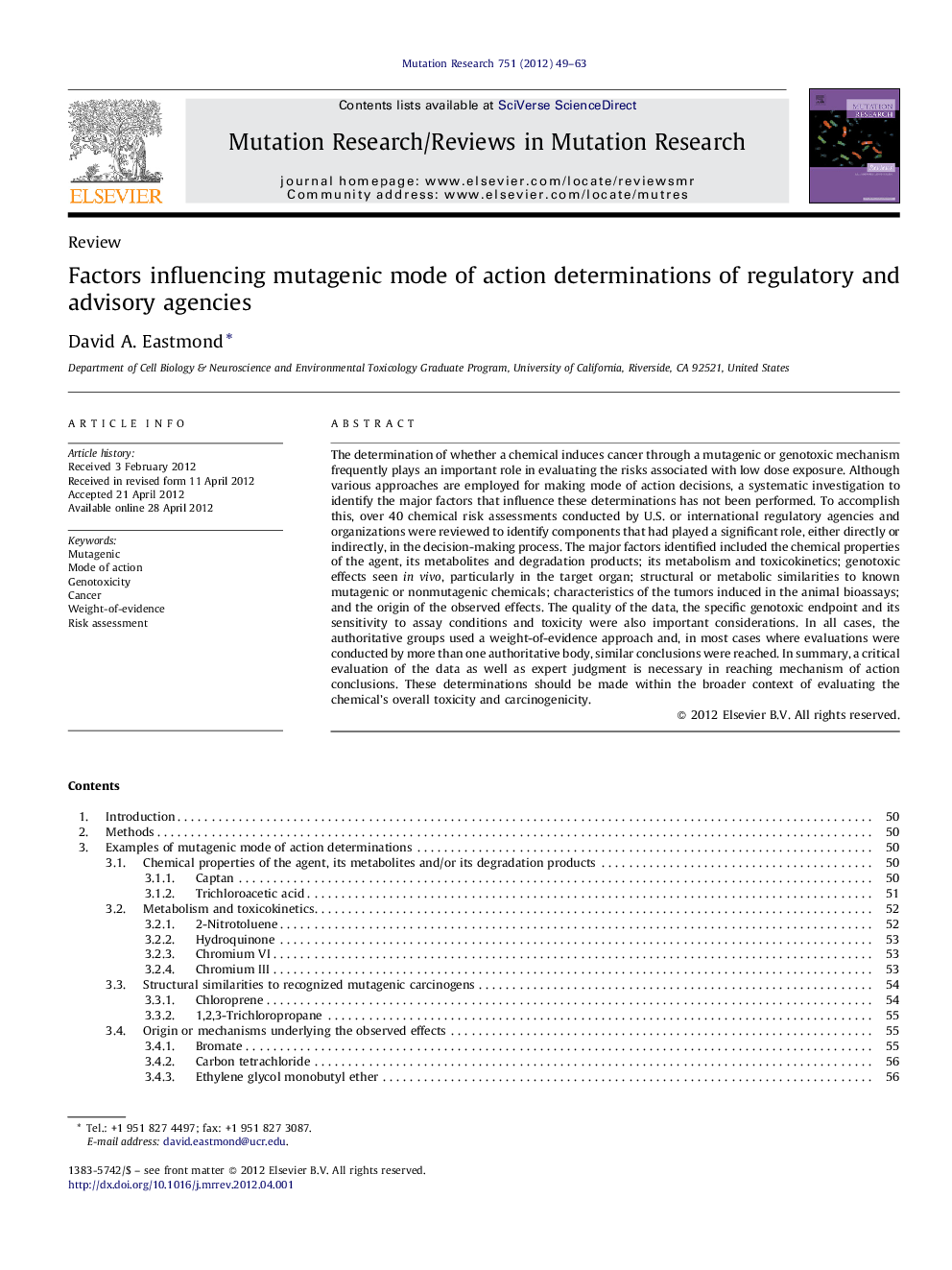| Article ID | Journal | Published Year | Pages | File Type |
|---|---|---|---|---|
| 2149575 | Mutation Research/Reviews in Mutation Research | 2012 | 15 Pages |
The determination of whether a chemical induces cancer through a mutagenic or genotoxic mechanism frequently plays an important role in evaluating the risks associated with low dose exposure. Although various approaches are employed for making mode of action decisions, a systematic investigation to identify the major factors that influence these determinations has not been performed. To accomplish this, over 40 chemical risk assessments conducted by U.S. or international regulatory agencies and organizations were reviewed to identify components that had played a significant role, either directly or indirectly, in the decision-making process. The major factors identified included the chemical properties of the agent, its metabolites and degradation products; its metabolism and toxicokinetics; genotoxic effects seen in vivo, particularly in the target organ; structural or metabolic similarities to known mutagenic or nonmutagenic chemicals; characteristics of the tumors induced in the animal bioassays; and the origin of the observed effects. The quality of the data, the specific genotoxic endpoint and its sensitivity to assay conditions and toxicity were also important considerations. In all cases, the authoritative groups used a weight-of-evidence approach and, in most cases where evaluations were conducted by more than one authoritative body, similar conclusions were reached. In summary, a critical evaluation of the data as well as expert judgment is necessary in reaching mechanism of action conclusions. These determinations should be made within the broader context of evaluating the chemical's overall toxicity and carcinogenicity.
